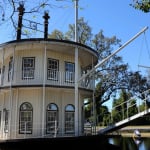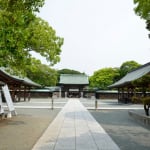Name: Former Ueda Family Residence
Address: 1-1-25 Uematsu-cho, Yao City, Osaka Prefecture
Official/Related Website URL: http://kyu-uedakejutaku.jp/index.html
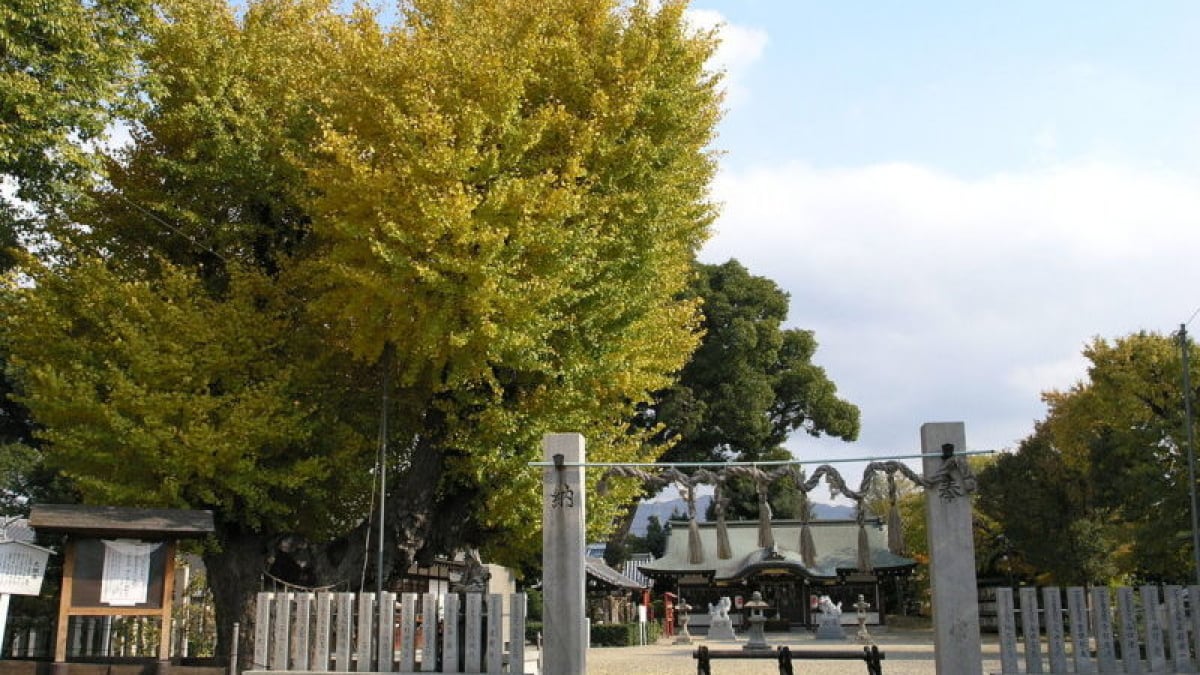
Stroll Through Historic Streets! 7 Recommended Sightseeing Spots in Yao City, Osaka
Located in the central eastern part of the Osaka Plain, Yao City sits right on the border between Osaka Prefecture and Nara Prefecture. Yao plays an important role in supporting "Osaka, the city of manufacturing." Despite being a hub of small and medium-sized enterprises, it boasts the top national share in toothbrush production and excels in advanced technological capabilities and product development in the electronics field. It’s a vibrant and energetic region. Yao is often associated with its strong image as a “manufacturing city,” but in reality, it’s also blessed with abundant nature, a deep historical background, and is a treasure trove of historical heritage. Numerous old townscapes have been preserved to this day, continuing to fascinate all who visit.
In this article, we’ll introduce some of Yao City’s best sightseeing spots—cultural heritage sites, spiritual power spots, and fun places to visit.
table of contents
[x] close
Stroll Through Historic Streets! 7 Recommended Sightseeing Spots in Yao City, Osaka
- 1. Cultural Heritage Site Retaining the Atmosphere of the Edo Period: Former Ueda Family Residence
- 2. Packed with Historical Appeal and Archaeological Fun: Yao City Shionjiyama Kofun Learning Center
- 3. Magnificent Edo-Period Sculptures and Ceiling Paintings: Kenshoji Temple
- 4. Protection from Misfortune, Love, and Luck: A Visit to Onji Shrine
- 5. Power Spot! Shibukawa Shrine with a 1,000-Year-Old Camphor Tree
- 6. Not Just for Kids! Adults Will Enjoy the Konpeitou Museum Yao Too
- 7. Seasonal Blossoms in Bloom: Kyuhouji Ryokuchi Park
- ◎Summary
1. Cultural Heritage Site Retaining the Atmosphere of the Edo Period: Former Ueda Family Residence
The Former Ueda Family Residence was registered as a "National Tangible Cultural Property" in March 2006 for preserving the historical scenery of the Edo period and for its valuable architectural framework that remains intact today. In May of the same year, it was also designated as a "Yao City Historic Site" and "Yao City Tangible Cultural Property."
The residence inherited the site of the “Anshin Shinden” administrative office, developed due to the redirection of the Yamato River in 1704. The property includes recognizable structures such as the main house, front gate, two storehouses, and a guardhouse. A new storage and exhibition facility has also been built to preserve approximately 40,000 historical documents, books, paintings, and crafts—making it a valuable place to learn about local culture and history. The facilities of Konoike Shinden and Minami-Kagaya Shinden (a National Important Cultural Property) also remain.
In addition to the historical scenery, you can enjoy traditional children’s games and various events, creating a nostalgic and heartwarming time.
2. Packed with Historical Appeal and Archaeological Fun: Yao City Shionjiyama Kofun Learning Center
The Yao City Shionjiyama Kofun Learning Center is an archaeological learning center adjacent to the Shionjiyama Kofun burial mound. This keyhole-shaped tumulus, measuring about 160 meters in total length, represents a mid-Kofun period tomb of a powerful local leader in the Nakakawachi region. It is designated as a National Historic Site. Following excavations, the site was developed into a historical park between 2001 and 2005. The mound and rows of haniwa (clay figures) have been restored, recreating its appearance from about 1,600 years ago, allowing visitors to physically experience ancient history.
Replicas of burial accessories excavated from Shionjiyama Kofun are displayed in the learning center’s exhibition room. Other enjoyable events include a Kofun quiz rally, haniwa-making workshops, and historical reenactments. Visitors can also enjoy learning archaeology through the center’s mascot “Haniwa Kotei,” making this an engaging and educational sightseeing spot.
Name: Yao City Shionjiyama Kofun Learning Center
Address: 5-143-2 Ohtake, Yao City, Osaka Prefecture
Official/Related Website URL: http://racco-taiken.com/sionji/
3. Magnificent Edo-Period Sculptures and Ceiling Paintings: Kenshoji Temple
Kenshoji Temple was originally established in the 15th century as a Jodo Shinshu Honganji sect temple but was destroyed during the Winter and Summer Sieges of Osaka. The current main hall was rebuilt in the mid-Edo period and is considered a significant structure that tells the history of that era. It has been designated as a Yao City Cultural Property, along with other parts such as the connecting corridors.
The large wooden main hall features impressive Edo-period carvings and ceiling paintings. On the north and west streets, the East Nagaya, Nagaya Gate, and the adjoining West Nagaya create a historic temple town atmosphere, making it an ideal sightseeing destination. Every year on New Year's Eve, a traditional bell-ringing ceremony is held where the first 108 visitors can participate in ringing the bell to dispel worldly desires. Numbered tickets are distributed, and visitors can also enjoy a lottery and free yudofu (tofu hotpot). Be sure to visit!
Name: Kenshoji Temple
Address: 4-4-3 Kyuhoji, Yao City, Osaka Prefecture
Official/Related Website URL: http://www5a.biglobe.ne.jp/~kenshoji/
4. Protection from Misfortune, Love, and Luck: A Visit to Onji Shrine
Onji Shrine is one of Japan’s oldest shrines with over 1,500 years of history. It has long been revered as a place where people purify sins and misfortunes, seek protection from disasters, and pray for traffic safety and a prosperous, happy life. The deities enshrined here are said to be associated with the rabbit and dragon. The rabbit guided the deity, which is why the shrine is known for blessings in traffic safety and matchmaking, while the dragon symbolizes good fortune and rising success.
When visiting, for health and fortune, stroke the “tama” orb held by the divine dragon statue in front of the main worship hall. The “sacred rabbit” is believed to help with matchmaking, so gently stroke it, write your wish on a prayer paper, tie it to the “knot string” on either side of the sacred rabbit, and pray again. The shrine also features the mysterious “Akka Well (Pure Water),” believed to predict the weather—a unique point of interest. Many visitors come to pray for good relationships, matchmaking, and success.
Name: Onji Shrine
Address: 5-10 Onji Nakamachi, Yao City, Osaka Prefecture
Official/Related Website URL: http://www.onji.or.jp/
5. Power Spot! Shibukawa Shrine with a 1,000-Year-Old Camphor Tree
Shibukawa Shrine, located in Uematsu-cho, Yao City, Osaka Prefecture, is an ancient shrine so venerable that it is listed in the Engishiki Jinmyocho, an ancient Japanese registry of deities. Within the shrine grounds stands a magnificent camphor tree, approximately 16 meters tall and estimated to be around 1,000 years old. This tree was designated a Natural Monument of Osaka Prefecture in May 1949. Behind the main shrine building, there's another camphor tree, which is designated as a preserved tree by Yao City.
Beyond the red torii gate, you’ll find shrines such as Inari Shrine and Ryuou Daijin, which are believed to offer blessings for matchmaking, marital harmony, safe childbirth, and even prosperity in the water trade. The sacred trees and the Ryuou Daijin are regarded as spiritual power spots, making this a highly recommended sightseeing destination. Shibukawa Shrine also hosts the summer festival "Gyaku Matsuri" and the seasonal "Yao Mono Ichi" markets in spring and autumn.
Name: Shibukawa Shrine
Address: 3-3-6 Uematsu-cho, Yao City, Osaka Prefecture
Official/Related Website URL: http://kamnavi.jp/mn/osaka/sibukawa.htm
6. Not Just for Kids! Adults Will Enjoy the Konpeitou Museum Yao Too
Konpeitou—the simple yet beloved sugar candy enjoyed by both children and adults—takes center stage at the Konpeitou Museum Yao. Here, visitors can learn about the history and culture of konpeitou, as well as how it's made.
In the hands-on workshop, you can experience making konpeitou yourself. At the “Konpeitou Workshop,” you’ll make the candy; at the “Karumera Workshop,” you’ll make caramel snacks; and at the “Sugar Art Class,” you can use brightly colored sugars to create your own artwork. After learning about the mysteries and origins of konpeitou, you’ll be even more excited to craft your own sweets. Factory tours are available on weekdays, allowing you to witness the skills of the artisans and even taste the adorable and delicious konpeitou. A surprise corner adds to the fun, and the handmade konpeitou can be taken home as a souvenir.
This destination is perfect for both kids and adults who want to enjoy a hands-on experience. Note: reservations are required for the factory tour.
Name: Konpeitou Museum Yao
Address: 2-88 Wakabayashi-cho, Yao City, Osaka Prefecture
Official/Related Website URL: http://www.konpeitou.jp/
7. Seasonal Blossoms in Bloom: Kyuhouji Ryokuchi Park
Kyuhouji Ryokuchi is an urban park equipped with tennis courts, baseball fields, a swimming pool, jogging trails, grassy areas, and a children’s playground. Its Flower Plaza and Peony Garden showcase stunning floral displays that change with the seasons, adding to the park’s charm.
The park features a wide variety of play equipment, including a playground complex with athletic activities, slides, and even some rock climbing. Barbecuing is also allowed. The central plaza, known as the “Flower Plaza,” is a highlight—where seasonal flowers bloom in vibrant beds, blending beautifully with the trees and sky in the adjacent “Wind Plaza.”
From late April to May, the “Peony Garden” comes alive with around 1,600 peony bushes spanning 48 varieties, showcasing up to 50,000 blossoms in full bloom—an elegant and breathtaking sight.
In December, the park hosts the “Kyuhouji Ryokuchi Sparkling Night,” illuminating the trees with twinkling lights. Food stalls and live performances make this event a joyful and soothing experience.
Name: Kyuhouji Ryokuchi Park
Address: 323 Nishikyuhouji, Yao City, Osaka Prefecture
Official/Related Website URL: http://www.toshi-kouen.jp/staticpages/index.php/kyuhouji_top
◎Summary
Yao City is a treasure trove of historical heritage, with many old streetscapes still preserved to this day. In this article, we introduced seven recommended sightseeing spots in this captivating city. Whether you're exploring cultural and historical sites like the Former Ueda Family Residence, praying for good fortune at Onji Shrine, or visiting power spots like Shibukawa Shrine, each location is full of charm and worthy of multiple visits.
At Kyuhouji Ryokuchi, enjoy seasonal flowers such as peonies and dazzling winter illuminations, which delight all who visit. And rain or shine, you can make and enjoy sweet konpeitou candies at the Konpeitou Museum Yao. We hope you’ll create special memories with your family and loved ones while visiting these seven must-see attractions in Yao City.
RELATED ARTICLES
REGIONS
CATEGORIES
FEATURED ON osaka
-
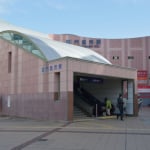
From History Museums to Parks: 5 Recommended Tourist Spots in Kadoma City, Osaka Prefecture
-
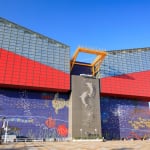
Thorough Guide to the Highlights and Events at Osaka’s Popular Attraction “Kaiyukan”
-
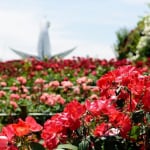
5 must-see tourist spots in Suita City, home to Expo ’70 Commemorative Park! Enjoy tours and hands-on experiences
-

[Kansai] What kind of hotels are ideal for “Hocance”? | Introducing 7 recommended picks
-
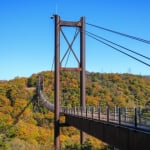
6 Carefully Selected Spots to Fully Enjoy the Rich Nature and Charm of Katano
MOST POPULAR ON osaka
-
 1
1Doha: Must-see Attractions in the Capital of Qatar
-
 2
2Toronto: 10 Things to do in this Picturesque Canadian City
-
 3
3Amarillo: A City Famous for It’s Amazing Canyons, Great History and Music
-
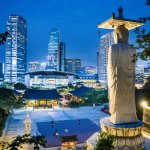 4
4South Korea: Dazzling Scenery, Rich Culture and Fascinating History
-
 5
5Kuwait: A Country in Middle East Asia Famous for Hot Sand Dunes and Stunning Cityscape



